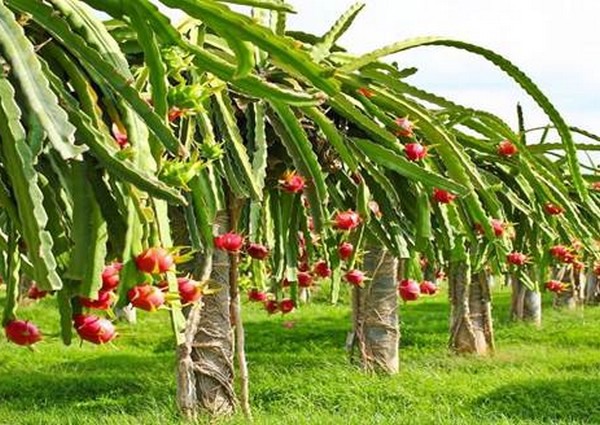Kamalam or dragon fruit, a herbaceous perennial climbing cactus widely known as Pitaya, has its origin in Southern Mexico, Central America and South America. It is widely cultivated in South-East Asia, India, USA, The Caribbean Islands, Australia throughout the tropical and sub-tropical world. Pitaya, called as Dragon fruit in English, is popular by different names such as Pithaya in Mexico, Pitaya Roja in Central and Northern America, Pithajah in Thailand and Kamalam after the Sanskrit name lotus in India. It is also known as “Wondrous Fruit of the 21st century”.
The dragon fruit has recently drawn much attention of the growers worldwide, not only because of their red purple colour and economic value as food products but also for their enormous health benefits.
Pitaya or dragon fruit is a climbing, fast growing perennial vine cactus species which originated from the tropical regions of Mexico and Central and South America. From its centers of origin, dragon fruit has spread over tropical and sub-tropical America, Asia, Australia and Middle East. Currently it is being cultivated in at least 22 countries of tropics.
In India, the cultivation of dragon fruit is fast picking up and farmers of Karnataka, Kerala, Tamil Nadu, Maharashtra, Gujarat, Chhattisgarh, Odisha, West Bengal, Andhra Pradesh, Andaman & Nicobar Islands, Mizoram and Nagaland have taken up its cultivation. Presently, the total area under cultivation of Dragon Fruit in India is more than 3,000 ha. which is not able to meet the domestic demand, hence majority of the dragon fruits available in Indian market is imported from Thailand, Malaysia, Vietnam and Sri Lanka.
Under MIDH, the Ministry of Agriculture & Farmers Welfare has approved a Centre of Excellence (CoE) for Kamalam Fruit to be established by Indian Institute of Horticultural Research (IIHR), Bengaluru, Karnataka at Hirehalli, Bengaluru, Karnataka on 09-03-2023 to focus on production, post-harvest and value addition of Kamalam.
For more information: pib.gov.in

